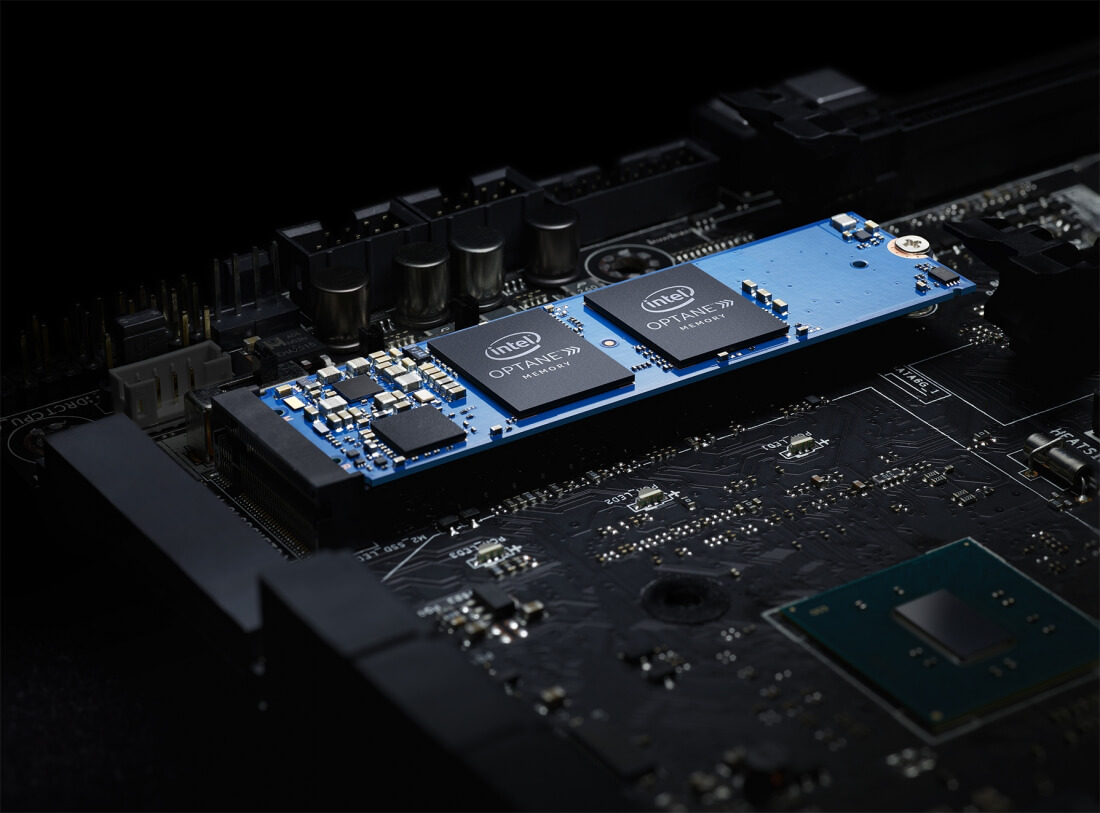hellokitty[hk]
Posts: 3,413 +146

Following the release of their first Optane-based data center SSD, Intel has now announced a consumer friendly followup to their next generation storage solution.
Intel and Micron jointly developed 3D Xpoint, branded as Optane, to bridge the gap between DRAM and NAND. While DRAM is fast, it's also volatile, and will lose data when powered down. NAND memory retains its data without power, but can't match the speed of DRAM. Optane is a new storage solution that promises to be non-volatile, and maintain high performance.
The consumer version of Optane will be available for purchase on April 24 in 16GB and 32GB versions initially. They will cost $44 and $77, respectively, which is several times more expensive per gigabyte than traditional high end SSDs. That price will buy you a rated sequential read speed of (up to) 1350 MB/s, and a random read speed of (up to) 240000 IOPS. The 32 GB version also boasts a read latency of just 9 µs, and a slightly less impressive sequential write speed of (up to) 290 MB/s.
Although the speeds are several times faster than current generation consumer SSDs, there is a major caveat: the consumer Optane drives can only be used as cache drives. You will not be able to install Windows or your favorite apps directly onto the drives. Instead, the SSD will act as a buffer for commonly accessed data and improve access speed. Intel claims a 2x faster boot time, 28% faster system performance, 65% faster game level loads, and that applications like the Chrome browser may launch up to 5x faster.
In order to use the first wave of Optane SSDs, you will need to be running Windows 10 with Intel's latest gen Kaby Lake processors and a supported 200 series motherboard chipset.
https://www.techspot.com/news/68686-intel-first-consumer-grade-optane-ssd-super-speedy.html